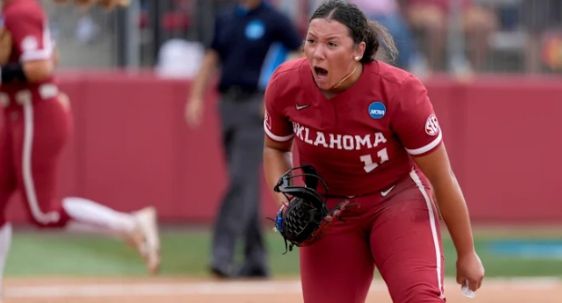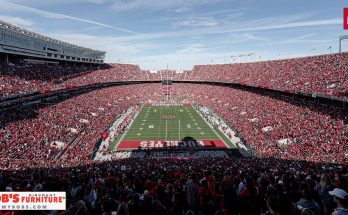In the world of college softball, few programs carry the weight of expectation quite like the Oklahoma Sooners. Under the leadership of head coach Patty Gasso, Oklahoma has built a powerhouse known for its relentless pursuit of excellence, particularly on the mound. As the 2026 season approaches, the Sooners find themselves in a unique position—a luxury that can also be a challenge: an unprecedented depth of pitching talent. With an abundance of arms vying for limited innings, the question arises: can Gasso balance this massive pitching depth effectively and maintain Oklahoma’s dominance on the national stage?
To appreciate the complexity of this question, it’s important to understand the historical context of Oklahoma softball and Gasso’s coaching philosophy. Since taking over the program in 1995, Gasso has transformed the Sooners into perennial contenders, capturing multiple national championships and consistently fielding teams with elite pitching staffs. Her approach is meticulous—she values versatility, stamina, and the mental toughness that distinguishes good pitchers from great ones. Balancing workloads and managing egos have been hallmarks of her tenure, but the 2026 roster presents challenges unlike any before.
The sheer volume of pitching talent committed to Oklahoma for 2026 is staggering. This includes a mix of seasoned upperclassmen, promising sophomores, and high-profile freshmen recruits, many of whom are considered among the best in the country. Traditionally, Gasso has relied heavily on a rotation of two or three pitchers to carry the majority of the innings, with spot appearances from others. However, the depth this year could allow for a more dynamic, situational approach. This has benefits, such as keeping pitchers fresh and leveraging unique skill sets against different opponents, but also risks disrupting rhythm and chemistry.
One key challenge for Gasso will be managing expectations among pitchers who are accustomed to significant playing time. High school stars arriving with lofty reputations may find themselves in a competitive environment where they must earn innings rather than be handed them. This can lead to internal friction if not handled with transparency and fairness. Gasso’s experience and reputation as a player’s coach will be crucial here; she has always fostered a team-first mentality, emphasizing collective success over individual stats. Maintaining that culture will be essential to prevent divisions within the pitching staff.
Moreover, the diversity of pitching styles available to Oklahoma gives Gasso an unusual tactical advantage. Among the depth are power pitchers with blazing velocity, crafty pitchers who excel at movement and control, and those with hybrid styles blending both. This variety could enable Oklahoma to tailor their pitching approach game by game or even inning by inning, exploiting opponents’ weaknesses and changing looks to keep hitters off balance. For example, a hard-throwing ace could start the game setting the tone, followed by a finesse pitcher who specializes in neutralizing left-handed hitters or inducing ground balls.
However, such tactical flexibility requires careful management. Overusing pitchers in short bursts can risk arm fatigue or injury, especially for those not conditioned to high-intensity appearances. Balancing the need to keep arms fresh with the desire to maximize pitching matchups demands a sophisticated understanding of individual workloads, recovery, and performance analytics. Fortunately, Oklahoma’s program is on the cutting edge of sports science, employing detailed data analysis and monitoring to guide coaching decisions. Gasso and her staff will likely lean heavily on this data to optimize pitcher usage throughout the season.
Another factor complicating the balancing act is the psychological component. Pitching is as much mental as physical, and confidence plays a huge role in performance. Rotating pitchers frequently may lead to some feeling “out of the flow,” while others thrive on knowing they can contribute in smaller, high-leverage situations. Gasso’s ability to nurture mental resilience and keep all pitchers engaged will be tested. The coaching staff’s communication skills and one-on-one support will be critical in ensuring each athlete understands their role and feels valued, regardless of innings pitched.
From a developmental perspective, the 2026 season could be pivotal for some of Oklahoma’s younger pitchers. Having a deep pool allows Gasso to gradually integrate freshmen and sophomores into competitive scenarios without overwhelming them. These younger players can learn from veterans during practices and game situations, fostering growth while preserving the team’s competitive edge. This mentorship dynamic has been a staple of Gasso’s teams in the past, contributing to the program’s sustained success and producing pitchers who mature into dominant collegiate and professional athletes.
The broader impact of this pitching depth extends beyond the mound. A well-managed pitching staff allows the rest of the team to flourish. When pitchers are confident and effective, the defense behind them can play more aggressively, knowing they have reliable support. Additionally, consistent pitching can reduce pressure on the offense to produce runs, allowing hitters to approach at-bats with less stress. In close games, having multiple pitching options can be the difference between victory and defeat, especially in postseason play where strategic pitching changes often decide outcomes.
However, history shows that even the most talented staffs can falter without proper balance. The temptation to over-rely on top arms or to over-rotate pitchers can lead to inconsistencies. Injuries can derail a season if not proactively managed. Fatigue and lack of cohesion may result if pitchers don’t get sufficient innings to find their rhythm. Gasso’s track record suggests she is well aware of these pitfalls and will implement strategies to mitigate them.
One such strategy might be implementing a tiered pitching system where pitchers are grouped by experience and situational effectiveness. For instance, the staff could feature an “ace” or two who handle the bulk of the biggest games, with situational specialists and emerging talents used strategically. This hierarchy would be flexible, allowing for adjustments based on performance trends and opponent scouting reports. The key is transparency—pitchers need to understand where they fit and how they can move up through the rotation.
In addition, Gasso may choose to leverage bullpen roles more aggressively, akin to professional baseball. Rather than expecting starters to finish games, a closer or “fireman” role could emerge, reserved for the team’s best reliever to shut down opponents in critical moments. This would be a shift for Oklahoma, which traditionally emphasizes complete games from starters but could provide a way to maximize the effectiveness of its deep pitching roster.
Looking ahead, the 2026 Sooners will undoubtedly attract significant attention from fans, media, and opposing teams, all eager to see how Gasso deploys her staff. The success of this pitching depth experiment could set a new standard for collegiate softball, demonstrating how elite programs can adapt to roster richness and evolve tactically. If successful, it will reinforce Oklahoma’s reputation as a forward-thinking, dominant force and highlight Gasso’s mastery as one of the sport’s premier coaches.
In conclusion, balancing Oklahoma’s massive 2026 pitching depth will be one of Patty Gasso’s most intriguing challenges yet. The convergence of talent, strategy, psychology, and player development demands an approach that is as nuanced as it is flexible. While the abundance of pitching options provides exciting opportunities to dominate opponents in new ways, it also requires careful management to maintain harmony and peak performance. Gasso’s history of success and leadership gives Oklahoma a strong foundation, but the ultimate test will be how well she can harness this extraordinary resource. For fans of Oklahoma softball, the 2026 season promises not only thrilling games but also a masterclass in coaching artistry as Gasso navigates the Sooner Showdown of pitching talent.


